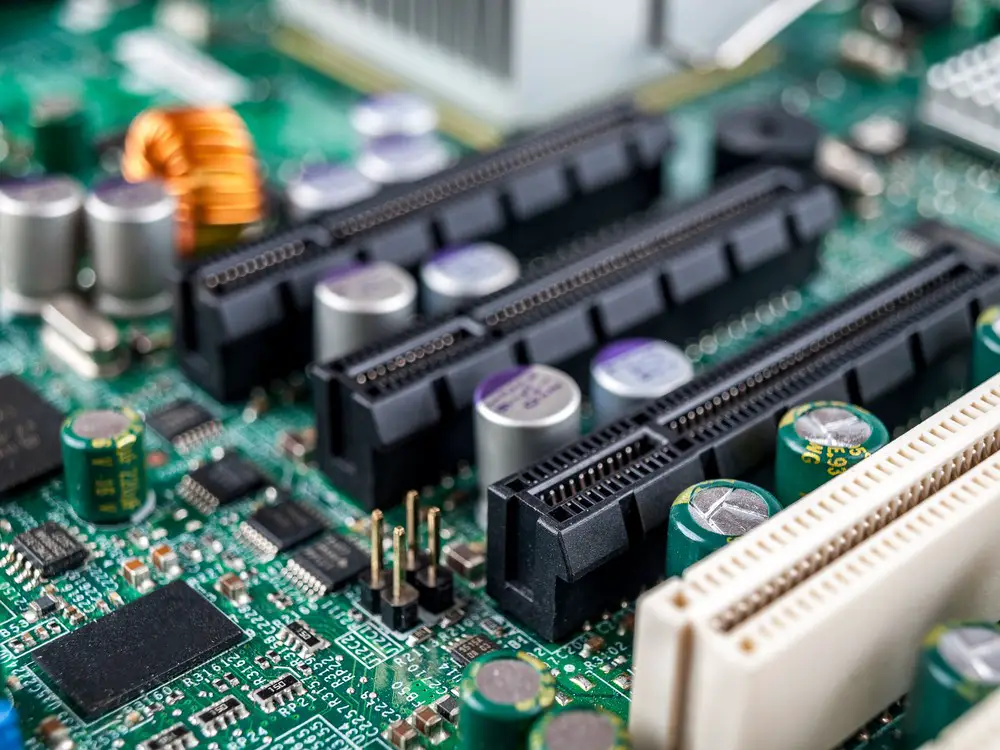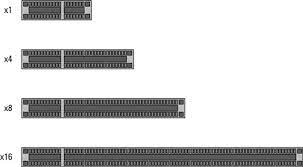You may have heard the term PCIe slots, but you’re not sure what they are or what they do. PCIe slots are an integral part of your computer, and if you don’t know what they are you could be missing out on some key features.
PCIe slots are used to connect different parts of your computer, allowing for faster data transfer between devices. They come in a variety of shapes and sizes, so it’s helpful to know which ones your devices use.
In this article, we will explain what PCIe slots are and look over some of the most common uses for them. By the end, you should have a better understanding of this key part of your computer, so let’s get started!
What are PCIe Slots?

PCIe (Peripheral Component Interconnect Express) is a type of slot used to connect different parts of your computer. PCIe slots are expansion slots used to connect additional PCIe devices to a computer. PCIe devices can include graphics cards, sound cards, network cards, and more. PCIe slots are located on the motherboard and vary in size, with the most common being 16x.
What are the standard sizes of PCIe Slots?

These slots come in different sizes, which are used to determine the speed and data transfer rate of the devices connected to them. The standard sizes of PCIe slots are determined by the PCI SIG. They are as follows:
1. PCI Express x1
The smallest slot, with a data transfer rate of 250 MB/s. This is typically used for low-bandwidth devices such as sound cards and network adapters.
2. PCI Express x4
Four times the bandwidth of a PCI Express x1 slot, with a data transfer rate of 1 GB/s. This is typically used for higher bandwidth devices such as graphic cards.
3. PCI Express x8
Eight times the bandwidth of a PCI Express x1 slot, with a data transfer rate of 2 GB/s. This is typically used for even higher bandwidth devices such as server-class network adapters and storage controllers.
4. PCI Express x16
Sixteen times the bandwidth of a PCI Express x1 slot, with a data transfer rate of 4 GB/s. This is the fastest slot and is typically used for top-of-the-line graphic cards.
The Uses of PCIe Slots
A PCIe slot is a connector on a computer motherboard that allows for the insertion of a graphics card, sound card, network card, and other expansion cards. Without these connectors, your computer would be limited to the integrated components that come with the motherboard.
By inserting an expansion card into a PCIe slot you can add new features and capabilities to your computer. For example, by adding a graphics card you can improve your gaming experience, or by getting a network card you can improve your internet speed.
You can also add more than one card to a single PCIe slot. This is called SLI (for NVIDIA cards) or Crossfire (for AMD cards). By adding multiple cards you can further improve the performance of your computer for gaming or other resource-intensive applications.
The speed of a PCIe slot is measured in lanes. The more lanes a slot has, the faster it is. A PCIe x1 slot has one lane and a PCIe x16 slot has 16 lanes. So, a PCIe x16 slot is much faster than a PCIe x1 slot.
Moreover, you can also find PCIe slots that are smaller or larger than the standard sizes. These are called half-size or mini-slots, and they are typically used for laptops or other small form-factor computers. There are also full-size PCIe slots that are twice as long as a standard slot. These are typically used in servers and high-end gaming PCs.
The number of lanes in a PCIe slot can also be different from the standard sizes. For example, a PCIe x4 slot may have only eight lanes. This is because the motherboard may not have enough space for all 16 lanes. In this case, the slot would be considered an 8-lane (x4) slot.
Moreover, there are also M.2 slots, which are used for SSDs. M.2 slots can be either PCIe or SATA based, and they can be any size from x1 to x16.
Final Thoughts
In summary, PCIe slots are used to add expansion cards to a computer. These expansion cards can add new features and capabilities, such as improved graphics or faster networking.
PCIe slots come in a variety of sizes, with the most common being x1, x4, x8, and x16. You can also find smaller or larger slots, as well as slots with different numbers of lanes. M.2 slots are used specifically for SSDs, and they can be either PCIe or SATA based.
I hope that this article has helped you to understand the different types of PCIe slots and their uses. If you have any further questions, please feel free to ask in the comments section below. Thank you for reading!
FAQs
How many PCIe slots are there on a typical motherboard?
Most motherboards have one or two PCIe slots. However, some high-end motherboards may have four or more PCIe slots.
What is the difference between a PCIe x16 slot and a PCIe x1 slot?
A PCIe x16 slot is a type of expansion slot that is used to connect graphics cards and other high-performance peripherals to a motherboard. A PCIe x1 slot is a type of expansion slot that is typically used for network cards and other low-performance peripherals.
Can I use a PCIe x16 card in a PCIe x1 slot?
No, you cannot use a PCIe x16 card in a PCIe x1 slot. A PCIe x16 card will not fit in a PCIe x1 slot.5.
Can I use a PCIe x1 card in a PCIe x16 slot?
Yes, you can use a PCIe x1 card in a PCIe x16 slot. However, the card will only operate at the slower PCIe x1 speed.
What is the maximum length and width of a PCIe card?
The maximum length of a PCIe card is 12.28 inches (312 millimeters) and the maximum width of a PCIe card is 4.92 inches (125 millimeters).
Can I use multiple graphics cards on my computer?
Yes, you can use multiple graphics cards on your computer if your motherboard has multiple PCIe slots.
Do I need a special power supply for my graphics card?
Most graphics cards require additional power from a PCI Express power connector. Make sure your power supply has the correct type and number of connectors for your graphics card.







